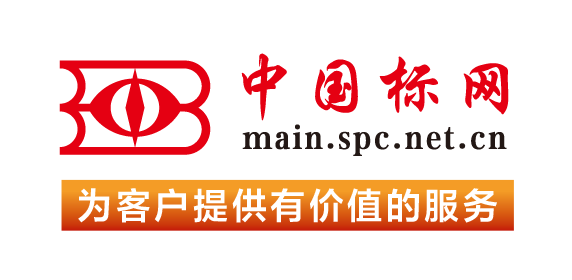5.1 When an engine oil is cooled, the rate and duration of cooling can affect its yield stress and viscosity. In this laboratory test, a fresh engine oil is slowly cooled through a temperature range where wax crystallization is known to occur, followed by relatively rapid cooling to the final test temperature. These laboratory test results have predicted as failures the known engine oils that have failed in the field because of lack of oil pumpability.4 These documented field failing oils all consisted of oils normally tested at –25 °C. These field failures are believed to be the result of the oil forming a gel structure that results in either excessive yield stress or viscosity of the engine oil, or both.5.2 Cooling Profiles: 5.2.1 For oils to be tested at −20 °C or colder, Table X1.1 applies. The cooling profile described in Table X1.1 is based on the viscosity properties of the ASTM Pumpability Reference Oils (PRO). This series of oils includes oils with normal low-temperature flow properties and oils that have been associated with low-temperature pumpability problems (1-5).5 Significance for the −35 °C and −40 °C temperature profiles is based on the data collected from the “Cold Starting and Pumpability Studies in Modern Engines” conducted by ASTM (6, 7).5.2.2 For oils to be tested at −15 °C or −10 °C, Table X1.2 applies. No significance has been determined for this temperature profile because of the absence of appropriate reference oils. Similarly, precision of the test method using this profile for the −10 °C test temperature is unknown. The temperature profile of Table X1.2 is derived from the one in Table X1.1 and has been moved up in temperature, relative to Table X1.1, in consideration of the expected higher cloud points of the viscous oils tested at −15 °C and −10 °C.1.1 This test method covers the measurement of the yield stress and viscosity of engine oils after cooling at controlled rates over a period exceeding 45 h to a final test temperature between –10 °C and –40 °C. The precision is stated for test temperatures from –40 °C to –15 °C. The viscosity measurements are made at a shear stress of 525 Pa over a shear rate of 0.4 s–1 to 15 s–1. The viscosity as measured at this shear stress was found to produce the best correlation between the temperature at which the viscosity reached a critical value and borderline pumping failure temperature in engines.1.2 This test method contain two procedures: Procedure A incorporates several equipment and procedural modifications from Test Method D4684–02 that have shown to improve the precision of the test, while Procedure B is unchanged from Test Method D4684–02. Additionally, Procedure A applies to those instruments that utilize thermoelectric cooling technology or direct refrigeration technology of recent manufacture for instrument temperature control. Procedure B can use the same instruments used in Procedure A or those cooled by circulating methanol.1.3 Procedure A of this test method has precision stated for a yield range from less than 35 Pa to 210 Pa and apparent viscosity range from 4300 mPa·s to 270 000 mPa·s. The test procedure can determine higher yield stress and viscosity levels.1.4 This test method is applicable for unused oils, sometimes referred to as fresh oils, designed for both light duty and heavy duty engine applications. It also has been shown to be suitable for used diesel and gasoline engine oils. The applicability to petroleum products other than engine oils has not been determined.1.5 The values stated in SI units are to be regarded as standard. No other units of measurement are included in this standard.1.5.1 Exception—This test method uses the SI based unit of milliPascal second (mPa·s) for viscosity which is equivalent to, centiPoise (cP).1.6 This standard does not purport to address all of the safety concerns, if any, associated with its use. It is the responsibility of the user of this standard to establish appropriate safety, health, and environmental practices and determine the applicability of regulatory limitations prior to use.1.7 This international standard was developed in accordance with internationally recognized principles on standardization established in the Decision on Principles for the Development of International Standards, Guides and Recommendations issued by the World Trade Organization Technical Barriers to Trade (TBT) Committee.
定价: 646元 / 折扣价: 550 元 加购物车
5.1 This test method enables the measurement of the volume of the apparent density cup to ensure that it complies with the specified volume of 25.00 cm3 ± 0.03 cm3 (cylindrical cup), or 16.39 cm3 ± 0.05 cm3 (square cup). Use of an out-of-specification cup will give erroneous apparent density values using the formulae in Test Methods B212, B329, and B417.1.1 This test method covers a procedure for measuring the volume of the apparent density cups used in Test Methods B212, B329, and B417.1.2 The apparent density cup, particularly its rim, may become worn during use, and it is recommended that the volume of the cup be checked periodically (at least every 6 months) in order to ensure that it complies with the specified volume.1.3 Units—With the exception of the values for density and the mass used to determine density, for which the use of the gram per cubic centimetre (g/cm3) and gram (g) units is the long standing industry practice, the values in SI units are to be regarded as standard.1.4 This standard does not purport to address all of the safety concerns, if any, associated with its use. It is the responsibility of the user of this standard to establish appropriate safety, health, and environmental practices and determine the applicability of regulatory limitations prior to use.1.5 This international standard was developed in accordance with internationally recognized principles on standardization established in the Decision on Principles for the Development of International Standards, Guides and Recommendations issued by the World Trade Organization Technical Barriers to Trade (TBT) Committee.
定价: 515元 / 折扣价: 438 元 加购物车
5.1 The vapor pressure of a substance as determined by measurement of evaporation reflects a property of the bulk sample. Little weight is given by the procedure to the presence of low concentrations of volatile impurities.5.2 Vapor pressure, per se, is a thermodynamic property that is dependent only upon composition and temperature for stable systems. In the present method, composition changes occur during the course of the test so that the contribution of minor amounts of volatile impurities is minimized.1.1 This test method covers a calculation procedure for converting data obtained by Test Method D972 to apparent vapor pressures and molecular weights. It has been demonstrated to be applicable to petroleum-based and synthetic ester lubricating oils,2 at temperatures of 395 K to 535 K (250 °F to 500 °F). However, its applicability to lubricating greases has not been established.NOTE 1: Most lubricants boil over a fairly wide temperature range, a fact recognized in discussion of their vapor pressures. For example, the apparent vapor pressure over the range 0 % to 0.1 % evaporated may be as much as 100 times that over the range 4.9 % to 5.0 % evaporated.1.2 The values stated in SI units are to be regarded as the standard. In cases in which materials, products, or equipment are available in inch-pound units only, SI units are omitted.1.3 WARNING—Mercury has been designated by many regulatory agencies as a hazardous substance that can cause serious medical issues. Mercury, or its vapor, has been demonstrated to be hazardous to health and corrosive to materials. Use caution when handling mercury and mercury-containing products. See the applicable product Safety Data Sheet (SDS) for additional information. The potential exists that selling mercury or mercury-containing products, or both, is prohibited by local or national law. Users must determine legality of sales in their location.1.4 This standard does not purport to address all of the safety concerns, if any, associated with its use. It is the responsibility of the user of this standard to establish appropriate safety, health, and environmental practices and determine the applicability or regulatory limitations prior to use. For specific warning statements, see 6.2, 7.1, 8.2, and Annex A2.1.5 This international standard was developed in accordance with internationally recognized principles on standardization established in the Decision on Principles for the Development of International Standards, Guides and Recommendations issued by the World Trade Organization Technical Barriers to Trade (TBT) Committee.
定价: 590元 / 折扣价: 502 元 加购物车
4.1 Cemented carbide materials may contain small voids that, depending on the application, may affect the performance of the product. To assist users in specifying the maximum acceptable level of porosity, this test method illustrates a broad range of porosity levels for each of three porosity types. This test method is not intended to be used as a specification, but the levels shown here may be cited in specifications written by producers and users of cemented carbides.1.1 This test method specifies procedures for the metallographic determination of apparent porosity in cemented carbides.NOTE 1: The term “apparent porosity” is construed to mean all microstructures observed on a properly prepared, unetched surface, including structures resulting from uncombined carbon, non-metallic inclusions, etc., as well as true, inherent porosity.1.2 This standard does not purport to address all of the safety concerns, if any, associated with its use. It is the responsibility of the user of this standard to establish appropriate safety, health, and environmental practices and determine the applicability of regulatory limitations prior to use.1.3 This international standard was developed in accordance with internationally recognized principles on standardization established in the Decision on Principles for the Development of International Standards, Guides and Recommendations issued by the World Trade Organization Technical Barriers to Trade (TBT) Committee.
定价: 646元 / 折扣价: 550 元 加购物车
4.1 This test method provides a method for determining the packed density of a bed of granular activated carbon. Determination of the packed density is essential when designing vessels to hold the material and for ordering purposes when procuring materials to fill existing vessels.1.1 This test method covers the determination of the apparent density of granular activated carbon. For purposes of this test method, granular activated carbon is defined as a minimum of 90 % being larger than 80 mesh.1.2 The values stated in SI units are to be regarded as standard. No other units of measurement are included in this standard.1.3 This standard does not purport to address all of the safety concerns, if any, associated with its use. It is the responsibility of the user of this standard to establish appropriate safety, health, and environmental practices and determine the applicability of regulatory limitations prior to use.1.4 This international standard was developed in accordance with internationally recognized principles on standardization established in the Decision on Principles for the Development of International Standards, Guides and Recommendations issued by the World Trade Organization Technical Barriers to Trade (TBT) Committee.
定价: 515元 / 折扣价: 438 元 加购物车
4.1 The apparatus and procedure described provides a means for measurement of the stiffness of a layer of soil or soil-aggregate mixture from which a Young's modulus may be determined for an assumed Poisson's ratio. Low strain cyclic loading is applied by the apparatus about a static load that is consistent with highway applications (1). 4.2 This method is useful as a non-destructive method for monitoring or controlling compaction so as to avoid under-compaction, over-compaction or wasted effort. Through an understanding of how stiffness relates to density for a particular material, moisture content and compaction procedure, the stiffness achieved can be related to % compaction in connection with density based compaction control or specifications, for example, to meet the requirements of Method D698 using standard effort or Method D1557 using modified effort. 4.2.1 This method applies to silty and clayey materials containing greater than 20 % fines. In such cases, the relationship between stiffness and dry density or dry unit weight is sensitive to the water content. Water contents should be determined by use of: Test Method D2216, D4643, or D4959. If the determination cannot be made immediately at the time of the stiffness measurements, then soil samples shall be preserved and transported in accordance with Practice D4220, Section 8, Groups B, C, or D soils. 4.2.2 This method is useful in the construction of road bases or earthworks, including the installation of buried pipe (2). 4.2.3 The rapid, non-penetrating nature of this method is suited to production testing, for example, it provides a means of testing that does not necessarily interfere with or delay construction. 4.3 This method is suitable for mitigating the risk of pavement failure. By assuring the relative uniformity of highway subbase, subgrade and base stiffnesses, stresses on the pavement is more uniformly distributed. In this way the life of a pavement is extended and repairs minimized. 4.4 This method is suitable for determining when the surface of a soil or soil-aggregate structure is capable of supporting design loads. This is useful for stabilized fills where the material hardens (stiffens) over time without measurable changes in density or moisture content. 4.5 This test method is suitable for the in-place determination of a Young's and a shear modulus of soil and soil-aggregate mixtures (3, 4). Stiffness, as measured by this method, is related to modulus (5) from an assumption of Poisson's ratio and from the radius of the foot of the apparatus as follows: where: Kgr = stiffness of the ground layer being measured, MN/m (klbf/in.), R = outside radius of the apparatus' foot, m (in.), ν = Poisson's ratio, E = Young's modulus, MPa (kpsi), and G = Shear modulus, MPa (kpsi). 4.5.1 The stiffness and modulus of silty and clayey materials will change with moisture content and can possibly result in hydro-compaction collapse, loss of bearing capacity or loss of effective shear strength. In addition, for silty and clayey materials with significant fines content, higher stiffness does not necessarily assure adequate compaction (6). 1.1 This test method covers the measurement by electro-mechanical means of the in-place stiffness of soil or soil-aggregate mixtures so as to determine a Young's modulus based on certain assumptions. The apparatus and procedure provide a fairly rapid means of testing so as to minimize interference and delay of construction. The test procedure is intended for evaluating the stiffness or modulus of materials used in earthworks and roadworks. Rapid in-place stiffness testing supports U.S. federal and state efforts to specify the in-place performance of construction materials based on modulus. Results obtained from this method are applicable to the evaluation of granular cohesionless materials. They are also applicable to the evaluation of silty and clayey materials with more than 20 % fines that are not subject to a change in moisture content. If the silty and clayey material experiences a change in moisture content, then moisture content shall be taken into account if the results of this method are to be applicable. The stiffness measured with this method is influenced by boundary conditions, specifically the support offered by underlying layers as well as the thickness and modulus of the layer being tested. Since this method approximates the layer(s) being evaluated as a half-space, then the modulus measured is also approximate. 1.2 The stiffness, in force per unit displacement, is determined by imparting a small measured force to the surface of the ground, measuring the resulting surface velocity and calculating the stiffness. This is done over a frequency range and the results are averaged. 1.3 Units—The values stated in SI units are to be regarded as standard. The values given in parentheses are provided for information only and are not considered standard. 1.4 This standard does not purport to address all of the safety concerns, if any, associated with its use. It is the responsibility of the user of this standard to establish appropriate safety, health, and environmental practices and determine the applicability of regulatory limitations prior to use. Note 1: Notwithstanding the statements on precision and bias contained in this test method; the precision of this test method is dependent on the competence of the personnel performing it, and the suitability of the equipment and facilities used. Agencies that meet the criteria of Practice D3740 are generally considered capable of competent and objective testing. Users of this test method are cautioned that compliance with Practice D3740 does not in itself assure reliable testing. Reliable testing depends on many factors; Practice D3740 provides a means of evaluating some of those factors. 1.5 This international standard was developed in accordance with internationally recognized principles on standardization established in the Decision on Principles for the Development of International Standards, Guides and Recommendations issued by the World Trade Organization Technical Barriers to Trade (TBT) Committee.
定价: 590元 / 折扣价: 502 元 加购物车
4.1 Apparent and true specific gravity, as determined by this test method, are influenced by the type of coals carbonized and the operating and preparational conditions of that carbonization, that is, charge bulk density, heating rate, and pulverization level. In turn, these properties directly influence the performance in processes using coke.1.1 This test method covers the determination of apparent specific gravity (Sections 5 to 9) and true specific gravity (Sections 10 to 14) of lump coke larger than 25 mm [1 in.] size and calculating porosity (Section 15) from the specific gravity data.1.2 Units—The values stated in either SI units or non-SI units are to be regarded separately as standard. The values stated in each system are not necessarily exact equivalents; therefore, to ensure conformance with the standard, each system shall be used independently of the other, and values from the two systems shall not be combined.1.3 This standard does not purport to address all of the safety concerns, if any, associated with its use. It is the responsibility of the user of this standard to establish appropriate safety, health, and environmental practices and determine the applicability of regulatory limitations prior to use.1.4 This international standard was developed in accordance with internationally recognized principles on standardization established in the Decision on Principles for the Development of International Standards, Guides and Recommendations issued by the World Trade Organization Technical Barriers to Trade (TBT) Committee.
定价: 515元 / 折扣价: 438 元 加购物车
3.1 Apparent porosity, water absorption, apparent specific gravity, and bulk density are primary properties of burned refractory brick and shapes. These properties are widely used in the evaluation and comparison of product quality and as part of the criteria for selection and use of refractory products in a variety of industrial applications. These test methods are used for determining any or all of these properties.3.2 These test methods are primary standard methods which are suitable for use in quality control, research and development, establishing criteria for and evaluating compliance with specifications, and providing data for design purposes.3.3 Fundamental assumptions inherent in these test methods are that the test specimens are not attacked by water, the test specimens conform to the requirements for size, configuration, and original faces, the open pores of the test specimens are fully impregnated with water during the boiling treatment, and the blotting of the saturated test specimens is performed as specified in a consistent and uniform manner to avoid withdrawing water from the pores. Deviation from any of these assumptions adversely affects the test results.3.4 In laboratory studies involving castable specimens, a bias was noted between formed 2 by 2 by 2 in. (50 by 50 by 50 mm) and specimens that were quartered from larger 9 by 4.5 by 2.5 (228 by 114 by 64 mm) cast specimens. Additionally, an error in the apparent porosity determination on castables was found whenever the specimens were heated to 1500 °F (816 °C) and then exposed to water as a saturation media (Test Methods C830). The error was attributed to reactivity of cement with water and subsequent re-hydration of cement phases. The higher the cement level of the castable, the greater the error noted. It was concluded that an error in porosity values could occur for refractory materials having a potential to form hydrated species with water.33.5 Certain precautions must be exercised in interpreting and using results from these test methods. All four property values are interrelated by at least two of the three base data values generated during testing. Thus, an error in any base data value will cause an error in at least three of the property values for a given test specimen. Certain of the properties, that is, apparent specific gravity and bulk density, are functions of other factors such as product composition, compositional variability within the same product, impervious porosity, and total porosity. Generalizations on or comparisons of property values should only be judiciously made between like products tested by these test methods or with full recognition of potentially inherent differences between the products being compared or the test method used.1.1 These test methods cover the determination of the following properties of burned refractory brick:1.1.1 Apparent porosity,1.1.2 Water absorption,1.1.3 Apparent specific gravity, and1.1.4 Bulk density.1.2 These test methods are not applicable to refractories attacked by water.1.3 The values stated in inch-pound units are to be regarded as the standard. The values given in parentheses are for information only.1.4 This standard does not purport to address all of the safety concerns, if any, associated with its use. It is the responsibility of the user of this standard to establish appropriate safety, health, and environmental practices and determine the applicability of regulatory limitations prior to use.1.5 This international standard was developed in accordance with internationally recognized principles on standardization established in the Decision on Principles for the Development of International Standards, Guides and Recommendations issued by the World Trade Organization Technical Barriers to Trade (TBT) Committee.
定价: 515元 / 折扣价: 438 元 加购物车
 购物车
购物车 400-168-0010
400-168-0010











 对不起,暂未有“apparent”相关搜索结果!
对不起,暂未有“apparent”相关搜索结果!













